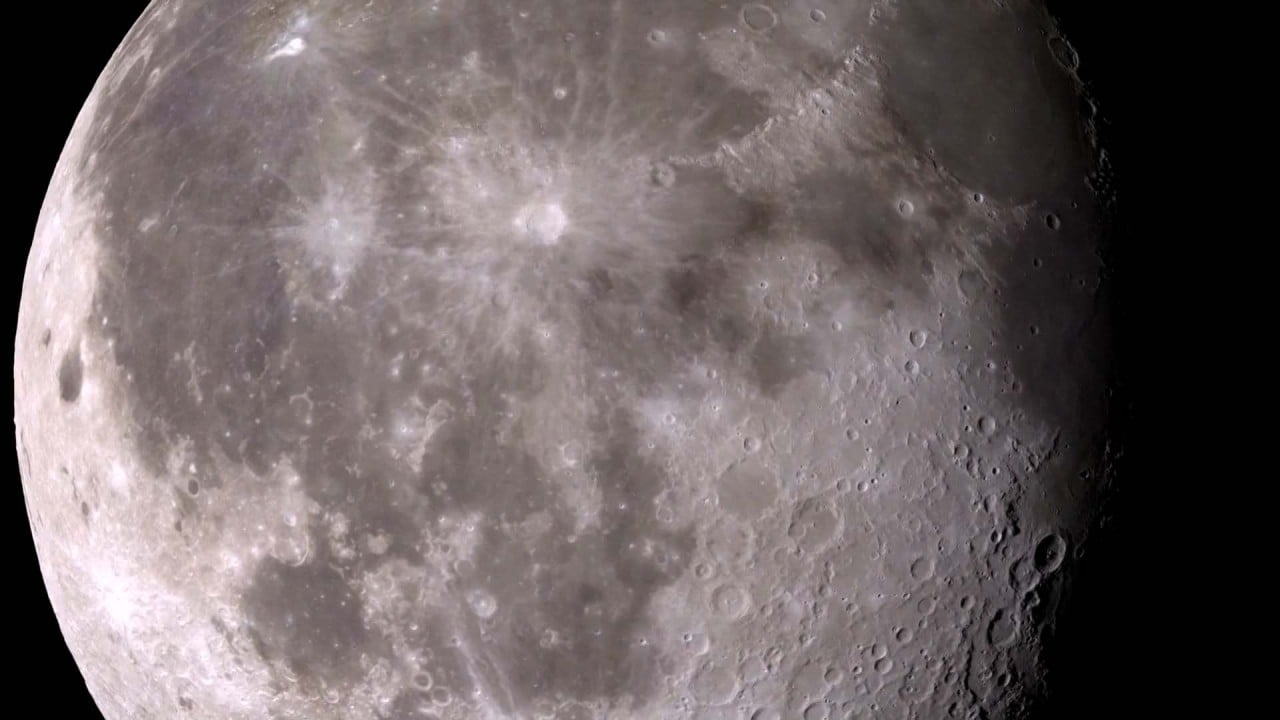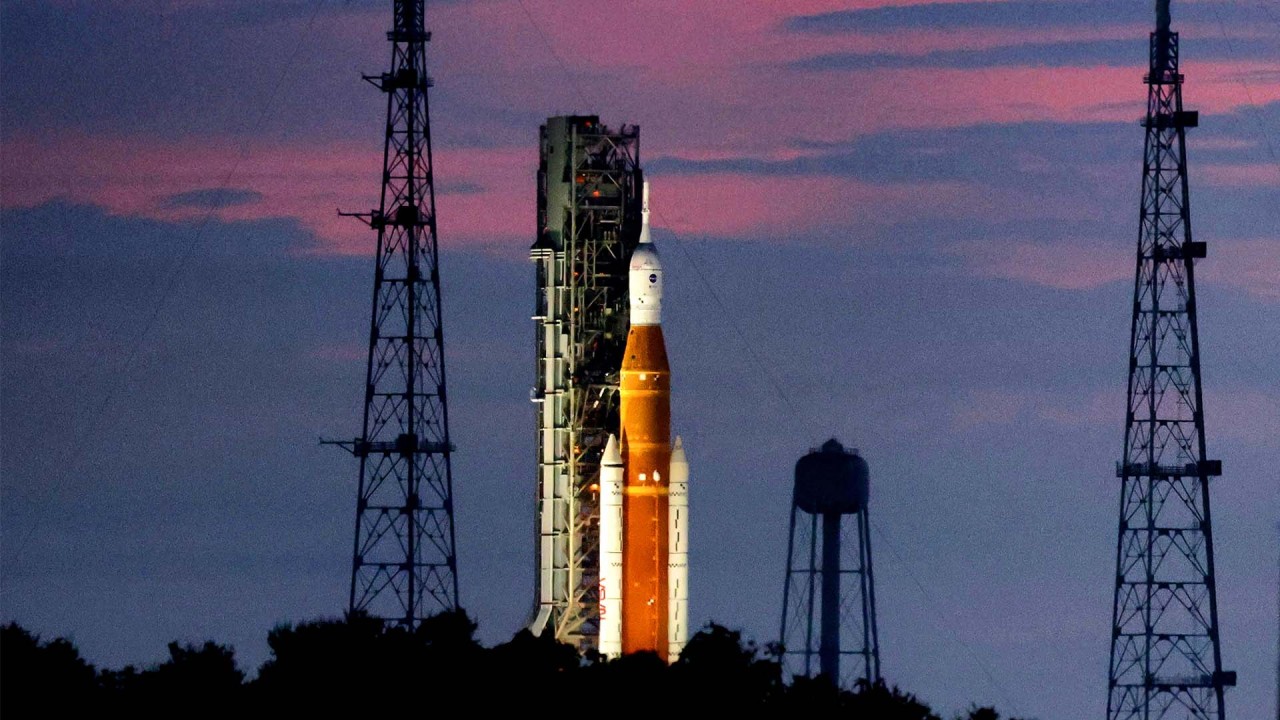
Why did lava flow on ‘cold and dead’ moon? Chinese scientists find clues
- Volcanic eruptions may explain lava rocks retrieved during China’s Chang’e 5 lunar mission
- The samples date back 2 billion years – long after the moon is thought to have cooled and hardened
Though the moon’s interior was cooling at the time, a lunar mantle increasingly rich in calcium and titanium – elements with relatively low melting points – may have helped sustain volcanic eruptions that produced the lava, according to a paper in Science Advances on Friday.
Scientists believe that the moon was formed 4.5 billion years ago as a magma ocean. Over the next 500 million years, it crystallised from the inside to form a structure with three layers – a core, a mantle and a crust – just like the Earth.
Scientists in China performed a series of experiments to explain the Chang’e 5 rocks and why there was lava flowing to the lunar surface 2 billion years ago, long after the moon was thought to have cooled and hardened.
In their latest study, Chen and colleagues compared how Chang’e 5 and Apollo samples emerged from the lunar mantle.
By simulating the conditions under which these samples formed, the team found that the lava from both samples emerged from a depth of about 500km (311 miles) below the moon’s surface, Chen said.
They also found the Apollo samples were formed at 1,440 degrees Celsius (2,624 degrees Fahrenheit) while the Chang’e 5 samples were formed at 1,360 degrees for Chang’e 5 – a difference of only 80 degrees. This showed that the moon cooled down slowly over a billion years.
One big difference between the Chang’e 5 and Apollo lava rocks were the concentrations of calcium oxide and titanium dioxide – both remarkably higher in the Chang’e 5 samples.
Chen said the calcium- and titanium-rich materials formed at the late stage of the lunar magma ocean are believed to have sunk to the bottom of the lunar mantle, but they could have re-emerged via a process known as mantle upwelling.
“I’m happy with this work as we were able to borrow techniques that we used in studying the Earth’s mantle and combine laboratory data with simulation,” he said.
Chen said the team looked forward to analysing more samples from the moon so one day they could finally work out when the moon went “cold and dead”.
“We only have two data points right now,” he said, referring to the Chang’e 5 and Apollo samples. More points are needed to establish a cooling curve.
More samples could come as soon as 2024, when China aims to launch its Chang’e 6 mission and bring back rocks from the far side of the moon.
The Chang’e 6 samples will probably fall between those from Chang’e 5 and Apollo in age, according to Li Chunlai, a senior scientist with China’s Chang’e Programme during a talk at the National Astronomical Observatories on Wednesday.
China also plans to launch an asteroid sample return mission in 2025 and retrieve samples from Mars around 2031.



